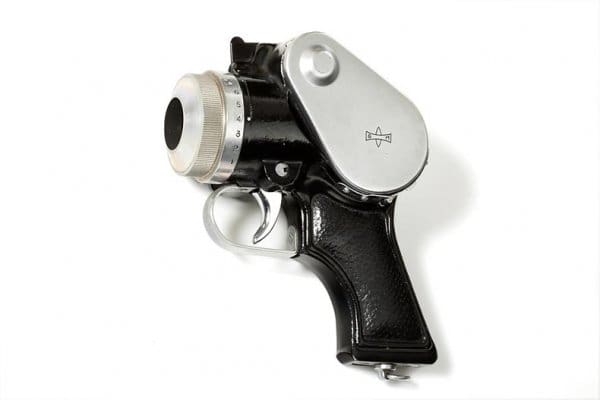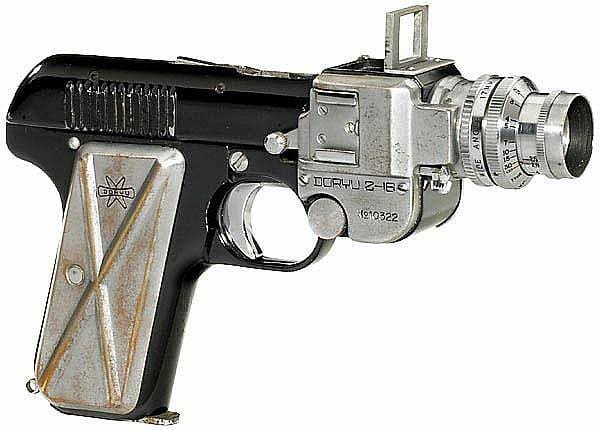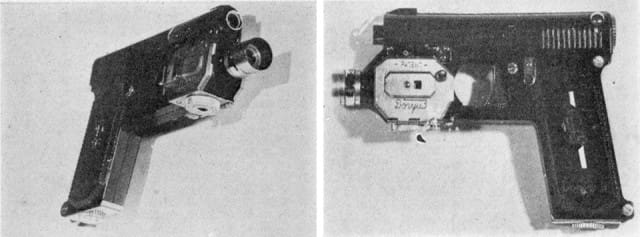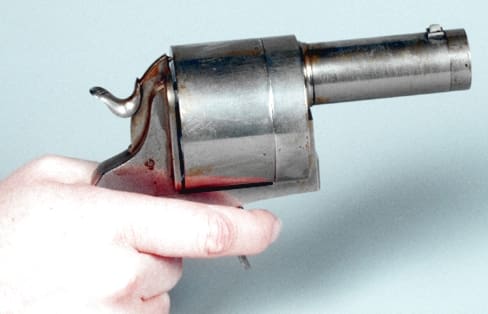Enthusiasts of firearms and photography often use similar terms and equipment. Both “shoot” the “target.” Both employ the use of a tripod to steady their aim. Both utilize a trigger (of sorts) to take their shots. Because of this, it should come as no surprise that a 19th century inventor sought to combine the best of both worlds.
Enter the Kilburn Gun Camera.
Inventor Benjamin Kilburn came up with his idea of a camera mounted on a gun stock while shooting photos of wildlife in rough mountainous terrain. There, he realized that the use of a traditional tripod would be difficult at best. The ground was too uneven to deploy a tripod with any degree of stability. Building off of his military experience during the Civil War, Kilburn knew that a modified rifle stock was the perfect solution.
The concept is as simple as it sounds: you mount a camera to a rifle stock and bring it to your shoulder to steady your aim, then pull the trigger to activate the shutter and take a photo.
The Scovill Manufacturing Company produced Kilburn’s invention and offered it in two variations: stock only for use with your own camera, or a stock and camera combo so that was ready to start capturing images right out of the box. Introduced in 1882, the product was short-lived; by 1886, production had stopped.
The gun-meets-camera concept was revisited in Asia after World War II, but their designs were based on pistols and, quite frankly, were likely to get you shot. Check out these examples:




Kilburn’s design has undergone some changes over the decades, but credit must be given to the guys who wrote the original ad copy for Scovill’s sales department, which used plenty of firearms terminology. Here’s some of the best ones:
– “Its ammunition is chemicals instead of powder and lead.
– “It is both breech and muzzle loading.”
– … a dead aim taken … and the trigger pulled.”
– “… dry plates as his stock of ammunition.”
I’ve never seen a Kilburn Gun Camera before. Having only recently learned of their existence, you can bet I’ll have my eyes peeled for one at flea markets and garage sales.
Logan Metesh is a firearms historian and consultant who runs High Caliber History LLC. Click here for a free 3-page download with tips about caring for your antique and collectible firearms.





But first, I’ll take a selfie…
🤠
“Kilburn’s design didn’t stand the test of time” – Yet shoulder stocks are still used to stabilize long lenses for wildlife photography when one has to move too much to accommodate setting up a tripod.
I suspect “Trouble”! That’s why I had my Web Cam permanently disconnected. So it does Record something that I “Don’t Want” recorded. If I wanted to be on YouTube! I’ll submit something on YouTube. I’m not entirely sure what the Big Fascination is about Recording “Everything You Do Is”? Are you purposely “Trying” to be Registered with “Whoever” on the Internet…
Well you get this amusing video (starts getting good around the halfway mark)
https://www.youtube.com/watch?v=awq90APEVgw
Or just Google up “Oleg Volk Gun Photography”
That was some funny sh!t!
I’d like to know the Reason that Oleg Volk had two shotguns converted into Table Lamps…
And here l thought this was a relatively modern contrivance. Saw a photographer at a football game, in the 70’s, with his Nikon mounted on a rifle stock. Thought it was his own invention.
Smile and wait for the flash!
Shot by a nervous cop?
Ding! Ding! Winnah!
Interesting. I imagine that one of the reasons the Kilburn Gun Camera company folded was that a LOT of supplies must have been needed to operate the camera: dry glass plates, development chemicals, and so forth. Having the diaphragm of the camera body mounted on the gunstock, while handier than operating such a camera from a tripod, must have nevertheless been bulky and laborious to operate. Until the Eastman-Kodak company invented snapshot cameras and film for the amateur photographer, glass plate technology limited a photographer to taking images of subjects that were standing still, whereas Kodak’s new technology allowed a photographer to take photos of subjects that were moving. Come to think about it, the Kilburn company folded at roughly the same time as the new Kodak snapshot cameras were getting their start. I’ve seen 35mm SLR cameras mounted on a gunstock-like device, so the idea has carried on through the years.
Interesting. Not surprised being a long-time antique dealer. LOTS of old discarded gadjets out there…
All you stupid, fat, and slow grey beards still using cameras with 8mm film!!!! Get with the times you dinosaurs!! The new hot 6mm film does everything the fat and stupid 8mm film does in a smaller, sexier, louder, and brighter package, AND in color!!!! 8mm film is for Neanderthals and drunks!!
I’ll take my Gun Camera (Gamera?) in 35mm, thanks.
“I’ll take my Gun Camera (Gamera?) in 35mm, thanks.”
16mm for me…
https://www.youtube.com/watch?v=ALH2LazrzgE
Something weird happened…
More 16mm gun camera footage :
https://www.youtube.com/watch?v=UpSTdJjCrrU
Gamera vs. Kodazilla
Just google handheld camera gimbal.
So this is where Elmer and Wile E Coyote got their ideas from! XD
Incidentally, I suspect that early radar guns looked similar.
Does it come in Creedmoor?
Next on “Forgotten Cameras…”
I wonder if this is how the flash-bang was invented…
Comments are closed.